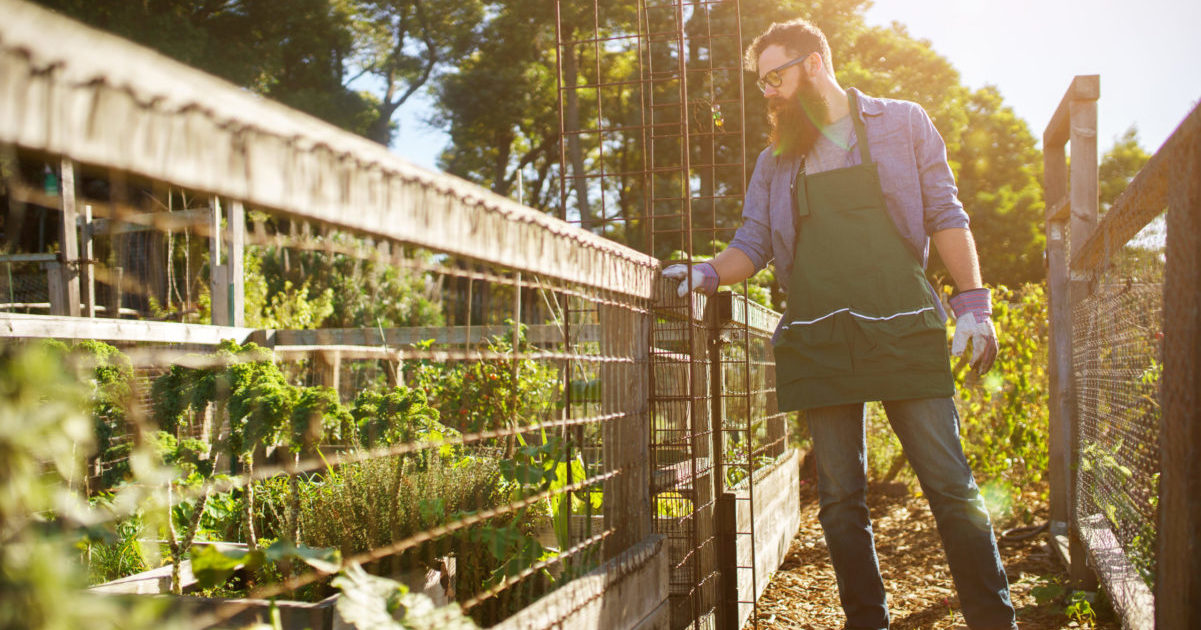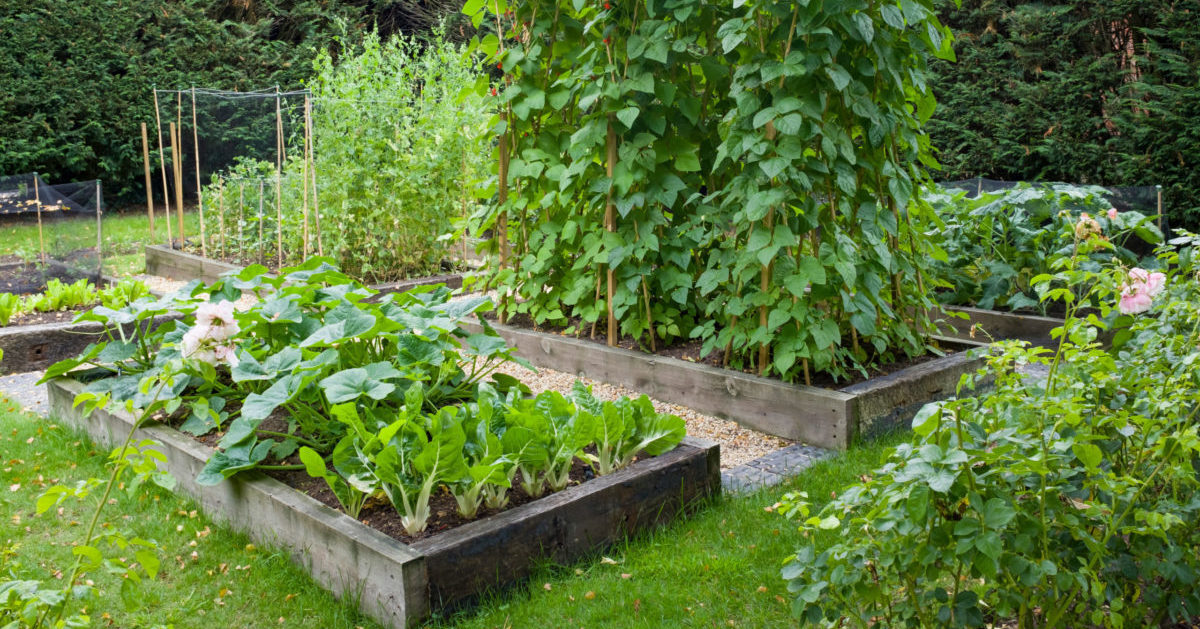Learn how to protect your family and home if the power goes out or the grid drops. From the best generators to off-grid living tricks and passive no-electricity-required permaculture techniques, I share everything that you need to know to create a safe and secure life no matter what goes down!
Products Mentioned in Video:
Jackary Solar Generator: https://amzn.to/3DvOkyu
Solar Oven: https://amzn.to/3HRYrAd
Solar Cooker: https://amzn.to/3l86Eaz
Cummins Portable Generator: https://shop.cummins.com/CSSNAStore/s/product/a2w4N000001CHA8QAO/cummins-onan-p9500df-dualfuel-generator-a058u967
Video Transcript:
How can you easily create more energy independence, even if you’re grid-tied, renting, and without breaking the bank? Are there easy things that you can do to take control of your own heating, cooking, and food storage that don’t require electricity from the grid?
Now, this has been a common concern lately, as some people are feeling the need to create security and take back control of their basic needs for themselves and their families. How can you rest easier at night without moving into some remote wilderness or installing some very expensive off-grid solar system?
Well, I’m going to teach you a simple three-step system to approach creating more self-sufficiency, and specifically energy independence, and how to remove the confusion and overwhelm from it. Also, I’m going to teach you how you can affordably have supplemental power, heat, and other energy needs met in short-term situations. But first, why is this important?
Now, I’m not interested in fear-mongering, as I feel it’s a major contributor to the problems in the world today. But there is something to be said for being aware of what is going on, and what could happen, and being prepared for it to ensure that your family is not caught off guard. For example, extreme weather events are always challenging our grid system. Just recently, this winter in Buffalo.
New York received over a hundred-year storm event, dropping six feet of snow in one storm. Maybe you remember a couple of years back, the Texas ice storms that disabled the grid for days as people struggled to keep their pipelines from bursting in their homes from flooding and freezing.
Lastly, it is possible that cyber attacks on the grid could happen, causing long-term disruptions. It could take weeks or months to sort something like that out. But the point here is not to be afraid or panic. The point is to be aware of what is possible so that way you can be educated and prepared so that you are on the offense and able to help others when something does happen.
So, what do you do and how do you do it? Well, before we get into it, go ahead and comment below the video and let me know your biggest challenge when it comes to creating energy independence. And regardless of your specific challenge, I hope that this video helps reduce or remove that to some degree. And that is because I want to teach you what I call degrees of self-sustainability or degrees of freedom.
Now, for those people who just can’t go out and afford a thirty-thousand-dollar off-grid solar system, creating energy independence is better approached not as all or nothing on-grid versus off-grid, but rather as degrees of energy independence.
What I mean is that the ultimate scenario might be being off-grid, but when you look at this realistically, the chances of the power going out for a day or two is much more likely than the grid being taken down for weeks or months in an apocalyptic scenario. That means that being self-sufficient for even just a few days or a week at a time has a higher likelihood of happening and, therefore, is where you should focus your attention and your energy first.
Now, I look at the degrees of preparedness or the degrees of self-sufficiency as short, medium, and long-term. For example, being prepared for say three days, then three weeks, then say three months or more.
For example, since we’re talking about power here, take action and get prepared for short-term outages first, and then once that is taken care of, move on to getting prepared for medium-term outages and so on. That said, let’s get into examples of short, medium, and long-term energy independence and strategies. After that, I’m going to show you what is the most important thing I have to teach you here today, and that is how to move away from needing energy altogether. So be sure to watch until the end for that piece.
Now let’s start with short-term energy independence. Here, again, I’m talking about having your basic needs met for a day or two or three. For me, this mostly centers around having a portable solar generator that can keep our basic needs like cell phones, computers, and other small AC devices up and running for a few days at a time.
I use the Jackery 1000, which is basically just a large rechargeable battery with a built-in inverter so you can run AC and DC-powered devices like USB chargers, laptops, modems, and lights. In fact, I can run my entire business off this one solar generator, and when it comes time to charge, I have two 100-watt foldable solar panels that keep me up and running.
Additionally, I have a stockpile of rechargeable batteries that I can charge off this unit to ensure that I keep things up and running, like lanterns and lights, even when the power is off.
For some people, these solar generators might be a fantastic alternative to stinky and noisy gas generators for short-term power outages, and it is well worth the investment. I’ve got a link below for you if you want to check out more about solar generators. But, of course, there are limitations, with it being only a thousand Watts, it won’t run a freezer for very long, for example, and if the power is off for more than a day or two, you might need more power than just a solar generator.
This gets us into looking at the medium-term approaches to bridging the energy gap in lower-cost ways. Now, for me, even with having many alternatives to needing power, such as solar cookers and ovens or passive solar Greenhouses, which I’ll share more about these energy-free methods at the end of the video, there are still some things that I want electricity for if the grid goes out for more than just a couple of days.
For example, we have two upright freezers that would start to defrost after a few days, and we would lose thousands of dollars of frozen veggies, fruits, and meats. And one of the more affordable solutions to this is a portable generator such as the Cummins 9500-watt dual-fuel generator. I’ve had mine for a couple of years, and I love it. It’s an electric start and has fired up every single time I need it.
The 9500 watts is plenty of power to run the essentials around the house. Also, being dual fuel, I can either run it off gasoline or better yet, it can be plumbed into a portable or permanent propane tank of any size, which, unlike Gas, propane does not go bad. So your run time at that point is solely limited by your propane tank size. And if you want to learn more about the Cummins generator, you can click the link below.
Additionally, depending on how your house is wired, for around $500 to $800 or so, you can have a transfer switch and plug installed so that the generator connects directly to your home, and you can power essential selected circuits, which is the safe way to do it. As running extension cords through windows and doors can pose a hazard.
Now, so far, we’ve covered two options that are as affordable as it gets to help ensure you’re not caught off guard with your pants down if the grid goes down for shorter periods of time. But what if the grid goes down for an extended period of time, and what if you can’t afford a super-expensive solar system? Next, let’s look at longer-term energy independence, and I mean here the need to get by for weeks or even months on end.
Now, this is obviously where a permanent off-grid power system is the appropriate solution, right? A whole house generator, a solar system, wind power, hydropower, or any combination of the above would allow you to go for months and years with the grid being down. But this is not the point of this video. Here is where I want to focus more on easier, more affordable, and more accessible options.
Sustainable Solutions and Alternatives
When it comes to true long-term self-sufficiency, we want to consider more traditional approaches and permaculture approaches. Now, permaculture is a toolset that we can use to combine how nature works with modern technologies to create more self-sufficiency and sustainability at the same time.
You might say, “But wait, Bret, I thought sustainability and self-sufficiency were pretty much the same things.” Well, they’re related but they are not the same thing. Sustainability is meeting the needs of the present without affecting the needs of the future. Self-sufficiency is taking care of your needs in the present, and it could be sustainable or not, but they’re both important.
So, the most important thing to address, in my opinion, before looking at how to create electricity when the grid is down, is how to alter your lifestyle and home to use different or even passive energy solutions, which are more often sustainable solutions. But this might not look exactly like you think.
For example, most people just think they need to keep the food in the refrigerator cold, so therefore you need electricity, which is logical. But we can shift our mindset to more traditional ways of living and remove the need for electricity altogether in some regards.
For example, instead of a fridge full of food, you could can and preserve your food like veggies and even meats. You can dehydrate food, and you can store bulk food like rice and beans, which requires no electricity to keep.
Personally, we tend to keep at least six months, though typically more like a year’s worth of food in our pantry alone. Or, you could build a root cellar, which uses the cooler temperatures of the earth to drastically increase your ability to store foods that require being cold or refrigerated. This requires no electricity.
And on the topic of food, you can also cook food without electricity or gas using a solar oven or a solar cooker, which simply uses the sun rays to cook anything from roast to cookies. The links below the video are some links to solar cookers if you’re curious to know more about them. So right there, you have solutions for keeping and cooking one of the essentials for life, food, without any electricity at all.
But what about heat, another much-needed essential? Most modern homes have a central heating system that requires electricity and/or fuel to provide heat, which won’t work if the grid is down. For us personally, all of our homes have either had a wood stove or a propane or gas stove installed so that we always had heat even if the grid was down.
Now, I prefer wood stoves from the sustainability and self-sufficiency perspective, as I could just go out and harvest wood from our land and heat our home no matter what. But the propane stoves are the next best choice, as you can have a 500 or a thousand-gallon propane tank installed on your property providing up to a year’s worth of heat even if there was no power.
Lastly, related to heating and cooling a home, I want to speak more specifically to passive solar energy design, where homes can be built in a way that harnesses solar energy. For example, we live in a passive solar straw bale home.
In addition to being very well insulated, during the winter months, the sun hits the south-facing windows and heats the thermal mass in the house, including bricks on the floor and walls, reducing the need to heat the home. In the summer, the specially designed eaves of the roof prevent the sun from hitting the windows, keeping the home cool to the point where it doesn’t require AC to stay comfortable even on hot days.
Now, I get that building a passive solar home isn’t exactly an easy and affordable solution as we’re talking about here in this video, but the concept is worth noting as it can be scaled down and used in the garden to extend your growing season. For example, we have a small greenhouse with black 55-gallon barrels that harness the sun’s energy and heat the greenhouse even during the winter months, allowing us to grow food when we otherwise wouldn’t be able to.
So, what I hope you’re seeing here is that there are lots of tools and strategies to reduce and remove energy dependence before even addressing how to power your home in life. What I hope you’re seeing is this is best approached from a phased standpoint, taking care of the most likely short-term power outage scenarios and working up from there.
Additionally, creating energy independence is not as overwhelming as it might seem, and it doesn’t need to break the bank when you again break it into short, medium, and long-term approaches.
Now, I, of course, did not mention everything I could or wanted to hear as this topic is something that can easily fill hours and hours of video. So, if you enjoy this topic, then subscribe for more.








